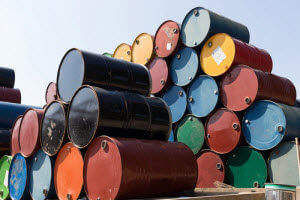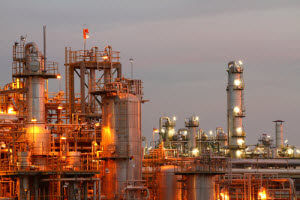Technology Improving Offshore Energy Resources Development & Maintenance
Throughout the years, technologies have become a necessity for boosting the performance and overall operation of every industry on the planet. Now, a recent study by BP states that new technologies are set to boost the energy production industry.
 According to David Eyton, the BP Group head of technology, these new technologies could make the energy supply and consumption safer and more efficient, cost-effective, and reliable. “These technologies are already transforming the oil and gas industry, and the longer term possibilities are frankly difficult to imagine,” he said.
According to David Eyton, the BP Group head of technology, these new technologies could make the energy supply and consumption safer and more efficient, cost-effective, and reliable. “These technologies are already transforming the oil and gas industry, and the longer term possibilities are frankly difficult to imagine,” he said.
A recent article by OffShoreEnergyToday.com notes that applying new technologies could increase resources from 2.3 million barrels of oil to 4.8 trillion barrels. That’s twice as much needed to meet the projected cumulative demand through to 2050.
Read on to learn more about the new technologies that are set to benefit the maintenance and development.
Seismic Imaging
Seismic imaging technologies are used to identify, access, explore, and recover oil, gas, and other minerals. Since the 1990s, 3D seismic imaging has helped to boost successful exploration rates of oil and gas. Now, this technology is more advanced and can even illuminate the subsurface from different orientations to find oil and gas resources quickly and easily.
With this and other advanced imaging technologies, the industry can easily find resource “sweet spots” that will be of great value. Plus these advancements will allow them to better understand subsurface factors such as reservoir structure and rock and fluid structure. According to BP, understanding these factors is critical to cost-effective, large-scale developments and maximizing the recovery of unconventional hydrocarbons.
Digital Technologies
 BP also states that digital technologies will help to boost offshore energy production. These will make radical changes in how energy is used, extracted, and found, thus opening opportunities for more efficient operations through unparalleled levels of data analysis.
BP also states that digital technologies will help to boost offshore energy production. These will make radical changes in how energy is used, extracted, and found, thus opening opportunities for more efficient operations through unparalleled levels of data analysis.
An example of digital technologies in the oil and gas industry are sensors in pumps, wells, appliances, and other equipment. These can connect to data collection machines and deliver real-time information on field activities. Intelligent wells will also provide advanced updates on well conditions.
Both of these as well as other digital technologies will help the industry to find oil and gas resources and provide more efficient ways to operate refineries.
Wind and Solar Technologies
In terms of offshore wind and solar energy production, many technologies will provide immense benefits. Advances in structure design, floating platforms, and foundations to support larger-scale towers would provide open access to wind resources at more than 200 meters in water depth.
Drones and 3D Scanning
Robotics and unarmed systems technologies like drones will help to benefit the offshore oil and gas industry. The report said they’ll be able to inspect difficult-to-access elements and areas deemed unsafe for humans.
On top of that, Managing Aging Plants mentions that 3D scanning can be implemented to work with the drones for easier maintenance.
As the drone flies around the plant, the camera attached to it will capture images of the systems in place. Then software will stitch together each photo and create a 3D model to give workers an accurate, high-resolution look of a surface, object, or area to monitor in the plant and see the spots where maintenance is needed.
In today’s age, technologies are becoming more and more critical to many industries across the globe including the oil and gas industry.
CPV Manufacturing is proud to provide the oil and gas industry with high-quality valves and fitting. To learn more about our products, contact us today.

